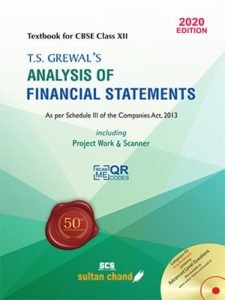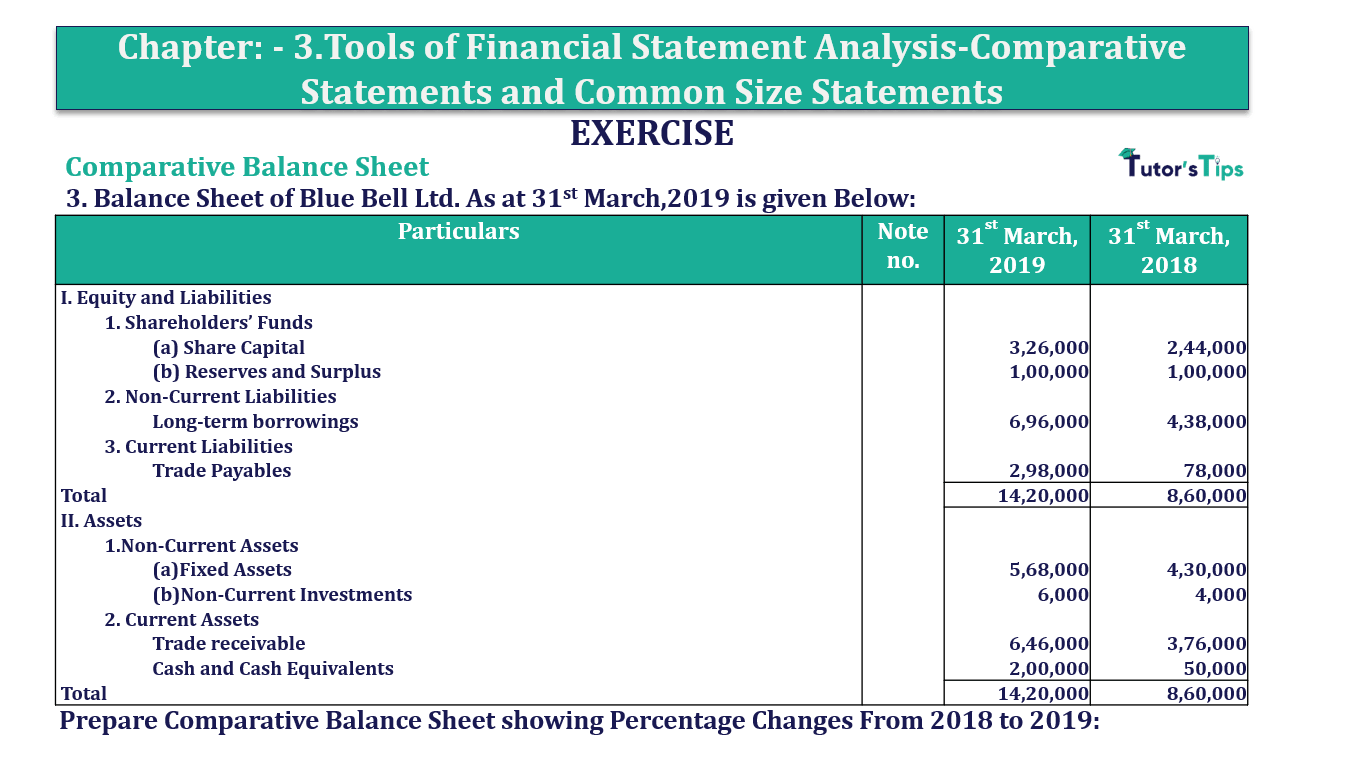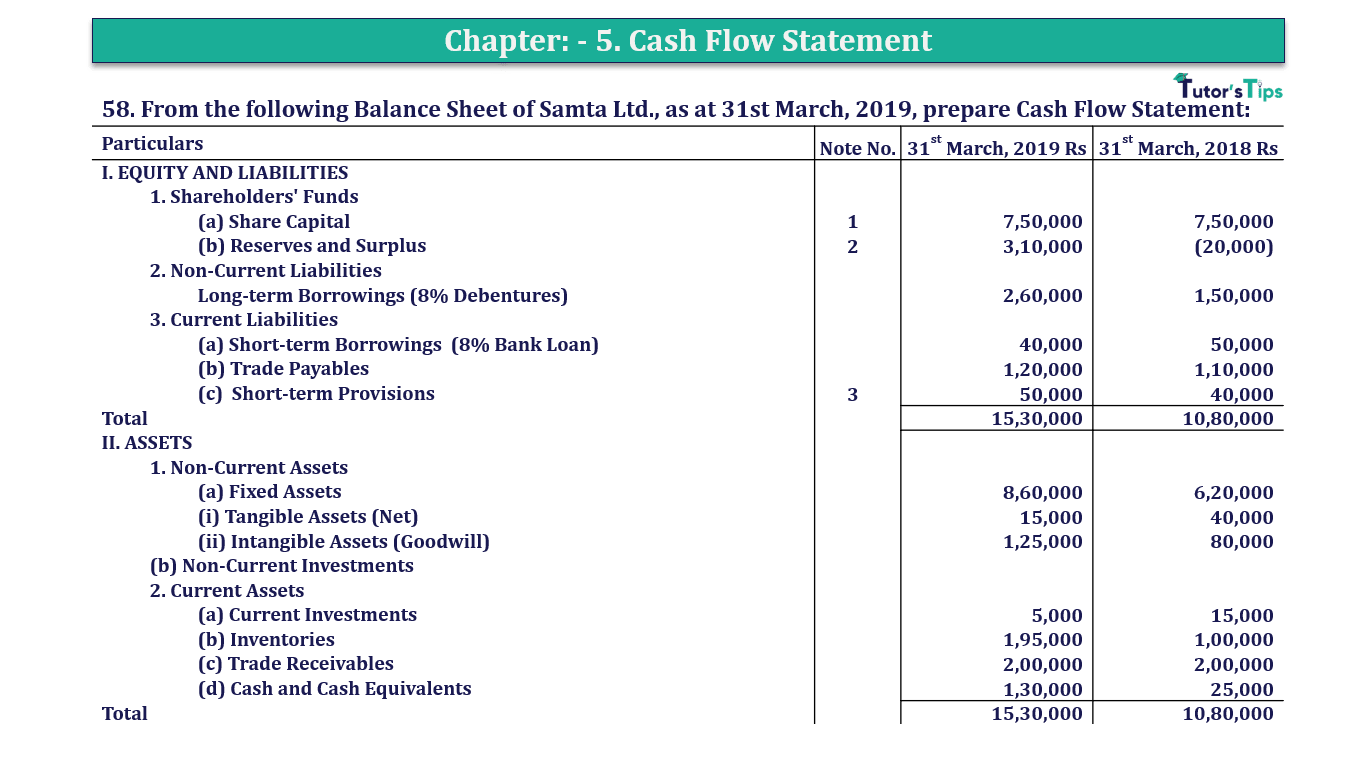Question 109 Chapter 4 of +2-B
Gross Profit Ratio
109. (i) Revenue from Operations: Cash Sales 4,20,000; Credit Sales 6,00,000;
Return 20,000. Cost of Revenue from Operations or Cost of Goods Sold
8,00,000. Calculate Gross Profit Ratio.
(ii) Average Inventory 1,60,000; Inventory Turnover Ratio is 6 Times;
Selling Price 25% above cost. Calculate Gross Profit Ratio.
(iii) Opening Inventory 1,00,000; Closing Inventory 60,000; Inventory
Turnover Ratio 8 Times; Selling Price 25% above cost. Calculate
Gross Profit Ratio.
The solution of Question 109 Chapter 4 of +2-B: –
Case I :
| Net Sales | = | Cash Sales + Credit Sales – Sales Return |
| = | Rs. 4,20,000 + Rs. 6,00,000 – Rs. 20,000 | |
| = | Rs. 10,00,000 | |
| Cost of Goods Sold | = | Rs. 8,00,000 |
| Gross Profit | = | Net Sales – Cost of Goods Sold |
| = | Rs. 10,00,000 – Rs. 8,00,000 | |
| = | Rs. 2,00,000 |
| Inventory Turnover Ratio | = | Cost of Goods Sold |
| Average Inventory |
| 8 | = | Cost of Goods Sold |
| Rs. 3,20,000 | ||
| = | 3,20,000 x 8 | |
| Cost of Goods Sold | = | Rs. 25,60,000 |
| Revenue from Operations | = | Gross Profit | X | 100 |
| Net Sales |
| Revenue from Operations | = | Rs. 2,00,000 | X | 100 |
| Rs.10,00,000 | ||||
| = | 20% |
Case II :
| Average Stock | = | Rs. 1,60,000 |
| Inventory Turnover Ratio | = | 6 Times |
| Inventory Turnover Ratio | = | Cost of Goods Sold |
| Average Inventory |
| 6 | = | Cost of Goods Sold |
| Rs. 1,60,000 | ||
| Cost of Goods Sold | = | Rs 1,60,000 X 6 |
| = | Rs 9,60,000 | |
| Gross Profit | = | 25% on Cost |
| Gross Profit | = | 25 | XRs.9,60,000 |
| 100 | |||
| = | Rs.2,40,000 |
| Net Sales | = | Cost of Goods Sold + Gross Profit |
| = | Rs. 9,60,000 + Rs. 2,40,000 | |
| = | Rs. 12,00,000 |
| Gross Profit Ratio | = | Gross Profit | X | 100 |
| Net Sales |
| Gross Profit Ratio | = | Rs. 2,40,000 | X | 100 |
| Rs.12,00,000 | ||||
| = | 20% |
Advertisement-X
Case III :
| Opening Inventory | = | Rs. 1,00,000 |
| Closing Inventory | = | Rs. 60,0000 |
| Average Inventory | = | Opening Inventory + Closing Inventory |
| 2 |
Advertisement-Y
| = | Rs. 1,00,000 + Rs. 60,000 | |
| 2 | ||
| = | Rs. 80,000 |
| Inventory Turnover Ratio | = | Cost of Goods Sold |
| Average Inventory |
| 8 | = | Cost of Goods Sold |
| Rs. 80,000 | ||
| Cost of Goods Sold | = | Rs. 80,000 x 8 |
| = | Rs. 6,40,000 | |
| Gross Profit | = | 25% on Cost |
| Gross Profit | = | 25 | x Rs. 6,40,000 |
| 100 | |||
| = | Rs.1,60,000 |
| Net Sales | = | Cost of Goods Sold + Gross Profit |
| = | Rs. 6,40,000 + Rs. 1,60,000 | |
| = | Rs. 8,00,000 |
| Gross Profit Ratio | = | Gross Profit | X | 100 |
| Net Sales |
| Gross Profit Ratio | = | Rs. 1,60,000 | X | 100 |
| Rs. 8,00,000 | ||||
| = | 20% |
Balance Sheet: Meaning, Format & Examples
Thanks, Please Like and share with your friends
Comment if you have any question.
Also, Check out the solved question of previous Chapters: –
T.S. Grewal’s Double Entry Book Keeping +2 (Vol. I: Accounting for Not-for-Profit Organizations and Partnership Firms)
- Chapter No. 1 – Financial Statement of Not-For-Profit Organisations
- Chapter No. 2 – Accounting for Partnership Firms – Fundamentals
- Chapter No. 3 – Goodwill: Nature and Valuation
- Chapter No. 4 – Change in Profit-Sharing Ratio Among the Existing Partners
- Chapter No. 5 – Admission of a Partner
- Chapter No. 6 – Retirement/Death of a Partner
- Chapter No. 7 – Dissolution of a Partnership Firm
T.S. Grewal’s Double Entry Book Keeping (Vol. II: Accounting for Companies)
- Chapter No. 8 – Company Accounts – Accounting for Share Capital
- Chapter No. 9 – Company Accounts – Issue of Debentures
- Chapter No. 10 – Redemption of Debentures
T.S. Grewal’s Double Entry Book Keeping (Vol. II: Accounting for Companies)
- Chapter No. 1 – Financial Statements of a Company
- Chapter No. 2 – Financial Statement Analysis
- Chapter No. 3 – Tools of Financial Statement Analysis – Comparative Statements and Common- Size Statements
- Chapter No. 4 – Accounting Ratios
- Chapter No. 5 – Cash Flow Statement
Check out T.S. Grewal +2 Book 2020@ Official Website of Sultan Chand Publication








Leave a Reply